and why do harlequins often look so whimsical and sad? This poor little chap sure had reason to be.
He’s an original design for a stained glass window from the 1960s and I was asked to reframe him.
He arrived squashed in the original frame, much too small for his scale. The minute moulding was too small having no strength to adequately accommodate the weight of the painting, backing and glass. The corners were dangerously loose, at risk of falling apart. The design was directly in contact with the glass and there was no protective undermount. When I opened up the frame the result of his “mistreatment” was clear to see. He had suffered. Let’s look at what happened.

.OFF-GASSING
Here we can clearly see a ghost of the design on the surface of the glass. If you look closely you can even see his eyes. This is a result of “off-gassing” which occurs when materials degrade producing acidic gasses that are trapped inside the frame. Because the design was directly in contact with the glass the effect of the gasses has transferred the image onto the inside surface, reducing clarity. Using quality materials protects the artwork and a mount would have prevented this happening. The glass isn’t damaged and could be cleaned and reused.
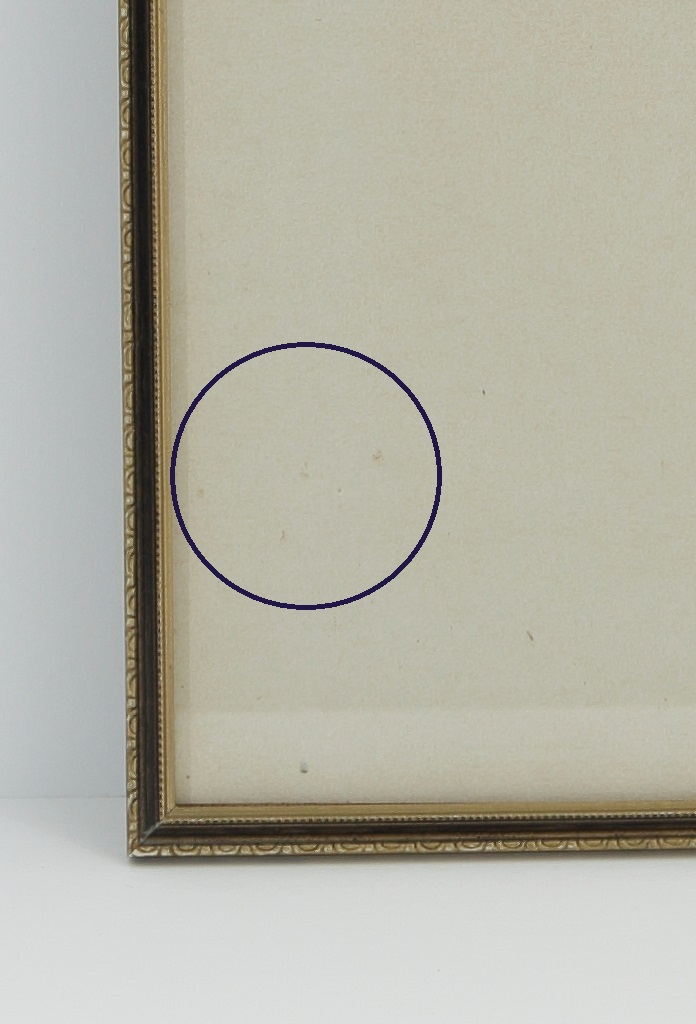
.FOXING
“Foxing” has occurred which is likely due to the paper being in contact with the glass. Significant changes in temperature and humidity can cause condensation to form on the inside surface. If the artwork becomes wet fungal growth can form and contaminants in the paper making process can oxidise causing unsightly stains.

ACTIVATED ACIDS
If you look closely you will see a shadow of the harlequin on the left hand board (the original backing board). This has been caused by light penetrating the paper around the image activating acids in the backing board. The image has acted as a stencil, so the board is darker where there is no image, the darker areas and outlining of the design has blocked the light.
.

ACID DAMAGE
As a consequence, activated acids have started to attack the artwork, the reverse of which is shown on the right. The stained area surrounding a white negative image is evidence of this. The paper is being weakened and the artwork is being damaged. Simply using a quality undermount would have protected the work from acids which have now leached into it.
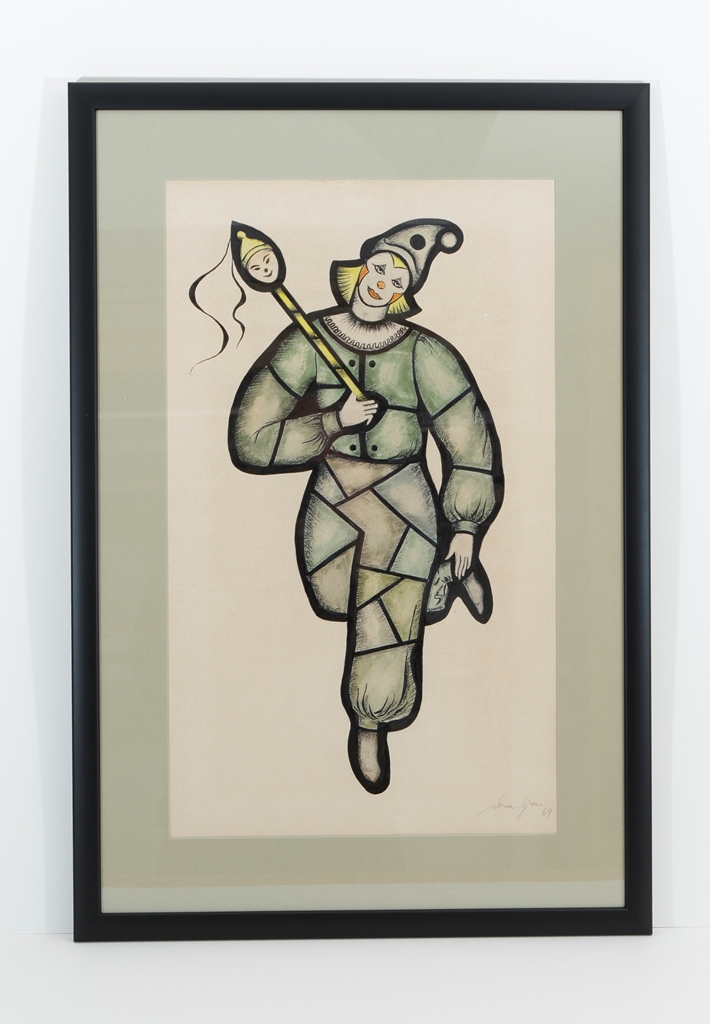
.
REFRAMED
Although there is nothing to compare it’s highly likely the colours of this piece of work have faded significantly, so we can only imagine what might have been. Working with what is left, I mounted using museum quality board in a soft “aged” colour. A conservation quality undermount protects the work from the backing board and will slow down any further acidic deterioration. Acids already present could possibly be flushed out by a professional paper conservator, but my client didn’t want to go that far.
Conservation Clear glass gives our little harlequin the best possible protection against the effects of UV light and is held above the image by the mount. Constant changes in humidity and temperature speeds up the process of deterioration, to protect against this the package is sealed ensuring a stable environment within the frame.
As this is the original design for a stained glass window a simple flat, matt black cushion moulding emulates the lead work.
Our little harlequin is now happy and safe in his new suit.
.
.
If reading this blog has raised other questions for you or you’ve noticed something you would like explained, call Bev on 01303 268618 or 07833 350815.


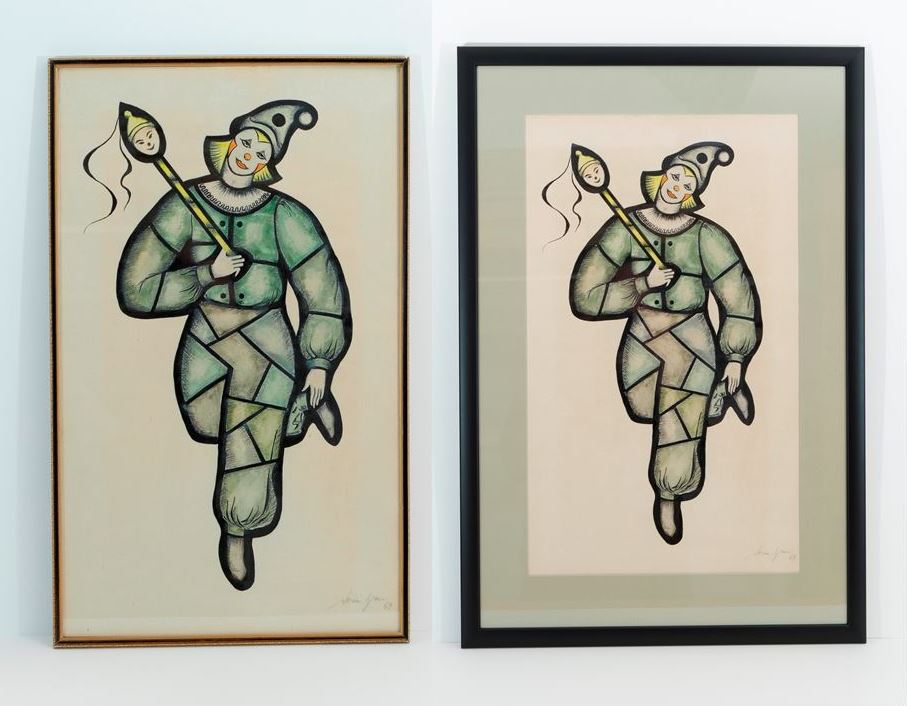
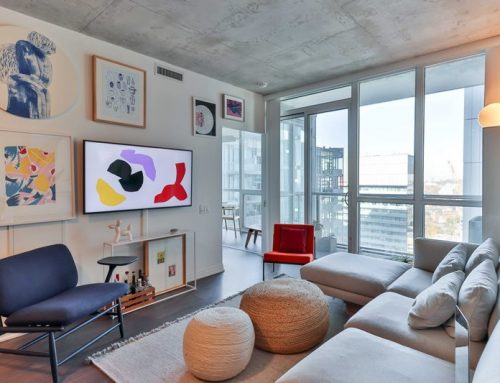

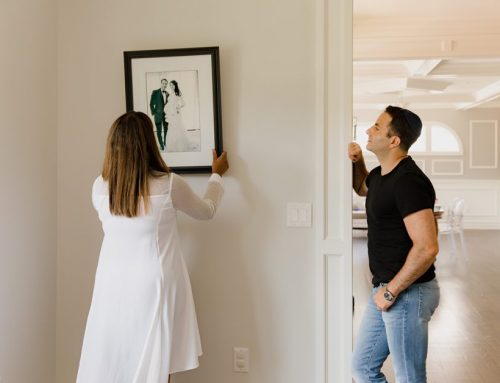

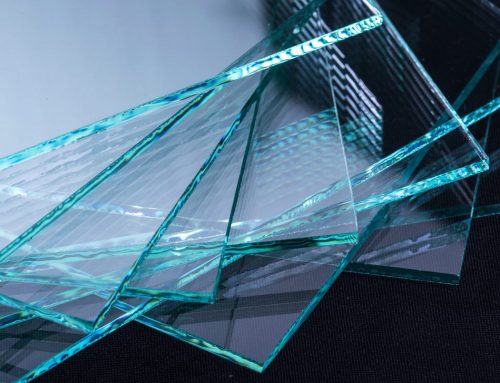
Leave A Comment